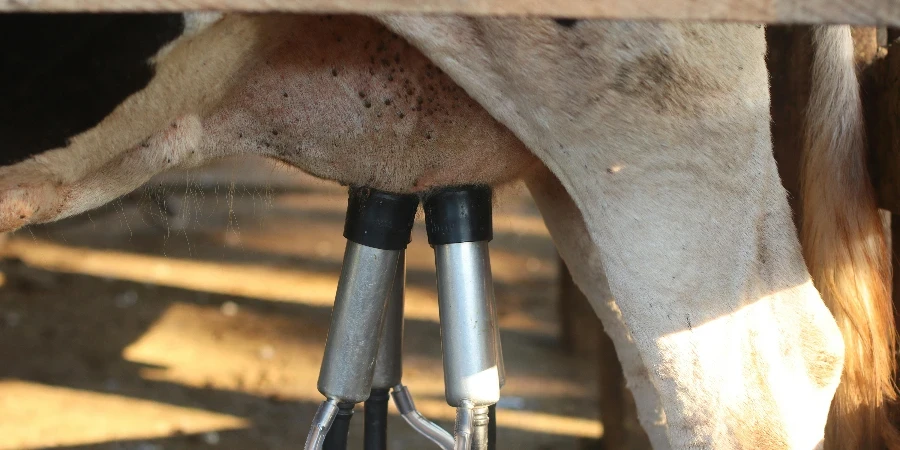The global cow milking machine market is thriving, projected to reach USD 4.94 billion by 2030. This article delves into the latest trends, technological advancements, and key considerations for selecting the right milking machine. Business buyers will find valuable insights to make informed purchasing decisions, ensuring efficiency and quality in their operations.
Daftar Isi:
-Global Market Overview of Cow Milking Machines in 2025
-Detailed Analysis of the Cow Milking Machine Market
-Key Factors When Selecting a Cow Milking Machine
-Latest Technology Features in Cow Milking Machines
-Standar dan Sertifikasi Keselamatan
-Ringkasan
Global Market Overview of Cow Milking Machines in 2025
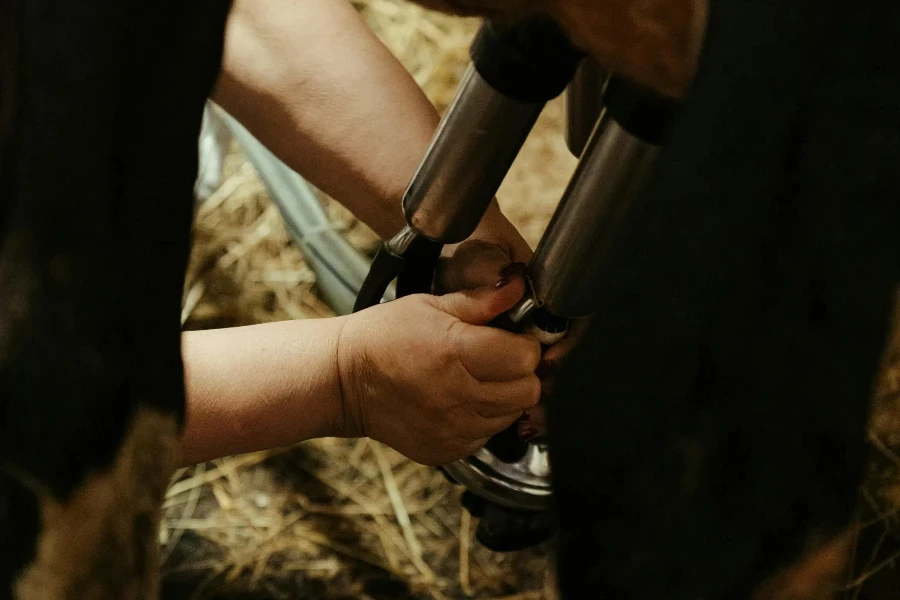
As of 2025, the global market for cow milking machines is experiencing significant growth and transformation. The market size was worth USD 2.34 billion in 2024, with projections indicating it will reach USD 4.94 billion by 2030, growing at a compound annual growth rate (CAGR) of 13.06%. The adoption of automated milking systems (AMS) has been driven by the need for improved efficiency in milk production and enhanced animal welfare. These systems, which include robotic arms, teat detection technology, and milk extraction apparatus, are becoming essential in modern dairy farming.
Increased demand for dairy products and rising labor costs have further accelerated the adoption of milking robots. Regions such as North America and Europe have shown high penetration rates due to technological advancements and supportive government initiatives. Meanwhile, the Asia-Pacific region is emerging rapidly, with significant growth in countries like China and Japan, driven by the transition from traditional to modern dairy farming practices.
Detailed Analysis of the Cow Milking Machine Market
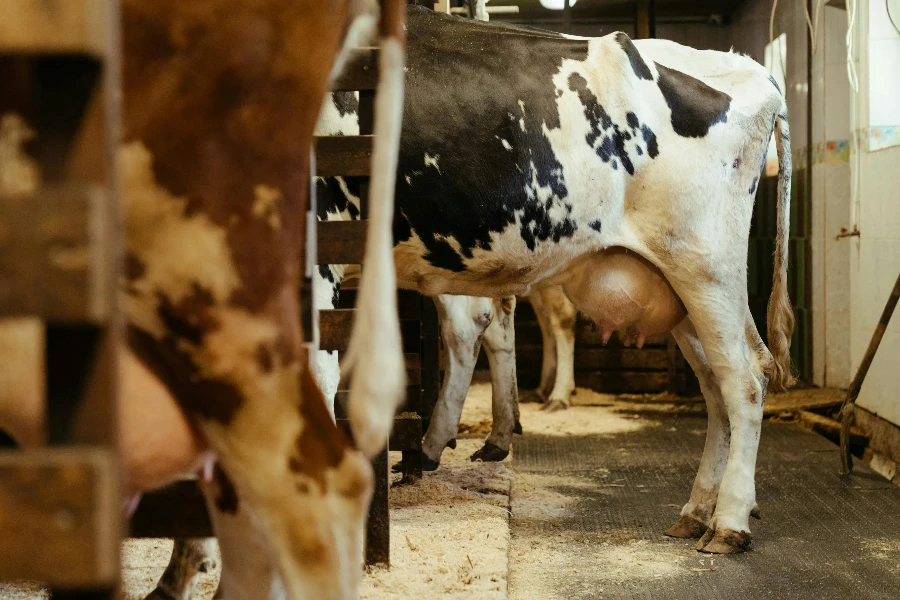
Tolok Ukur Kinerja Utama dan Dinamika Pangsa Pasar
The cow milking machine market is characterized by benchmarks such as efficiency, reliability, and cost-effectiveness. Automated milking systems have significantly reduced the labor required for milking, allowing for continuous operation and higher milk yields. The market is segmented into single-stall units, multi-stall units, and automated milking rotary systems, each catering to different scales of dairy operations. Single-stall units, which accounted for a significant market share, are projected to reach USD 2 billion by 2030, growing at a CAGR of 9.7%.
Pengaruh Ekonomi dan Perubahan Perilaku Konsumen
Rising labor costs and increasing demand for dairy products are major drivers of market growth. The shift towards organic and sustainably produced dairy products has influenced consumer behavior, with a growing emphasis on animal welfare and product quality. This has led to the adoption of milking robots that ensure gentle and consistent milking, improving both milk quality and animal health.
Preferensi Saluran Distribusi dan Inovasi Terbaru
The distribution of cow milking machines is predominantly through direct sales channels, dealerships, and online platforms. Manufacturers are increasingly leveraging digital platforms to reach a broader customer base and provide comprehensive after-sales services. Recent innovations include advanced analytics for predictive maintenance, enhanced data analysis tools, and compact units for smaller herds. DeLaval’s VMS Batch Milking system and BouMatic’s Gemini UP have set new benchmarks in efficiency and user-friendliness.
Tahapan Siklus Hidup Produk dan Digitalisasi
The product lifecycle of cow milking machines involves stages from development and market introduction to growth, maturity, and eventual decline. Currently, the market is in the growth stage, with continuous advancements and increasing adoption rates. Digitalization plays a crucial role, with the integration of Internet of Things (IoT) technologies and data-driven management systems enhancing operational efficiency and decision-making.
Masalah Pelanggan dan Strategi Penempatan Merek
Despite the benefits, high initial capital investment and technical expertise required for maintenance remain significant barriers. To address these issues, manufacturers are developing more reliable and user-friendly systems. Brand positioning strategies emphasize long-term cost savings, improved milk quality, and animal welfare benefits of automated milking systems. Companies are also offering flexible financing options and comprehensive training programs to facilitate adoption.
Strategi Diferensiasi dan Pasar Ceruk
Differentiation in the cow milking machine market is achieved through technological innovation, product reliability, and customer support. Companies like Lely, GEA Group, and DeLaval have established themselves as leaders by continuously innovating and providing robust customer service. Niche markets within the industry include small-scale dairy farms and organic dairy producers, where compact and cost-effective milking solutions are in high demand.
Social Trends and Sustainability
The growing trend towards sustainable agricultural practices has significantly impacted the cow milking machine market. Milking robots that minimize waste and optimize resource use are increasingly favored. Additionally, the emphasis on animal welfare and the reduction of carbon footprints are driving the adoption of eco-friendly and energy-efficient milking technologies.
Key Factors When Selecting a Cow Milking Machine
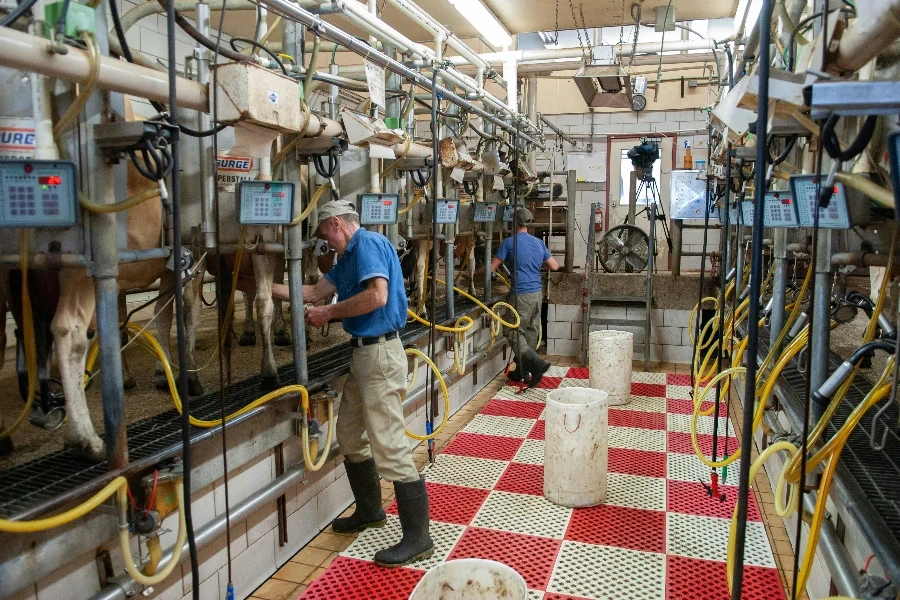
When selecting a cow milking machine, several critical factors must be considered to ensure that the machine meets your operational needs efficiently. These factors include the types of milking machines available, their performance, functionality, design, and ease of use. Below, we delve into each of these aspects in detail.
Types of Cow Milking Machines
There are primarily two types of cow milking machines: the bucket milking machine and the pipeline milking system. Each type has its specific advantages and applications.
Bucket Milking Machine: This type of machine is portable and ideal for small to medium-sized farms. It consists of a vacuum pump, pulsator, teat cups, and a bucket where the milk is collected. The portability allows for flexibility in moving the machine to different cows or locations. However, it requires manual handling, which might be labor-intensive.
Pipeline Milking System: Designed for larger operations, this system features a network of pipes that transport the milk directly from the cow to a central storage tank. The vacuum pump and pulsators are stationary, reducing the need for manual labor and increasing efficiency. This system is more expensive and requires a well-planned installation but offers higher milking throughput and improved milk hygiene.
Kinerja dan Fungsionalitas
The performance of a cow milking machine is measured by its milking speed, efficiency, and milk quality preservation. Key performance indicators include:
Milking Speed: The machine’s ability to milk cows quickly without causing stress is crucial. High-performance machines can milk a cow in approximately 5-7 minutes, depending on the cow’s yield.
Efisiensi: Efficient machines minimize milk wastage and ensure that most of the milk is extracted. This includes the functionality of the vacuum pump and the pulsator, which should work synchronously to mimic the natural milking process.
Milk Quality Preservation: Machines must maintain milk quality by minimizing contamination and ensuring proper cooling. Features like automatic cleaning systems and stainless steel contact parts are essential for maintaining hygiene standards.
Mendesain
The design of a cow milking machine impacts its usability and maintenance. Important design considerations include:
Ergonomi: Machines should be designed to minimize physical strain on the operator. This includes the height and weight of the machine, handle placements, and ease of maneuverability for bucket milking machines.
Bahan dan Membangun Kualitas: High-quality materials like stainless steel and durable plastics are preferred for their longevity and ease of cleaning. The build quality ensures the machine can withstand the rigors of daily use without frequent breakdowns.
Kemudahan penggunaan
User-friendly features in cow milking machines enhance operational efficiency and reduce training time for new operators. Considerations include:
Control Interface: Machines with intuitive control panels and clear indicators for operation status, milk volume, and maintenance alerts are preferred. Digital displays and automated settings add to convenience.
Perawatan dan Pembersihan: Machines that are easy to disassemble and clean help maintain milk hygiene and extend the machine’s lifespan. Automatic cleaning systems are a significant advantage, reducing the manual labor required for maintenance.
Mobilitas: For bucket milking machines, wheels and lightweight designs improve mobility. For pipeline systems, modular designs that allow for easy expansion or reconfiguration are beneficial.
Latest Technology Features in Cow Milking Machines
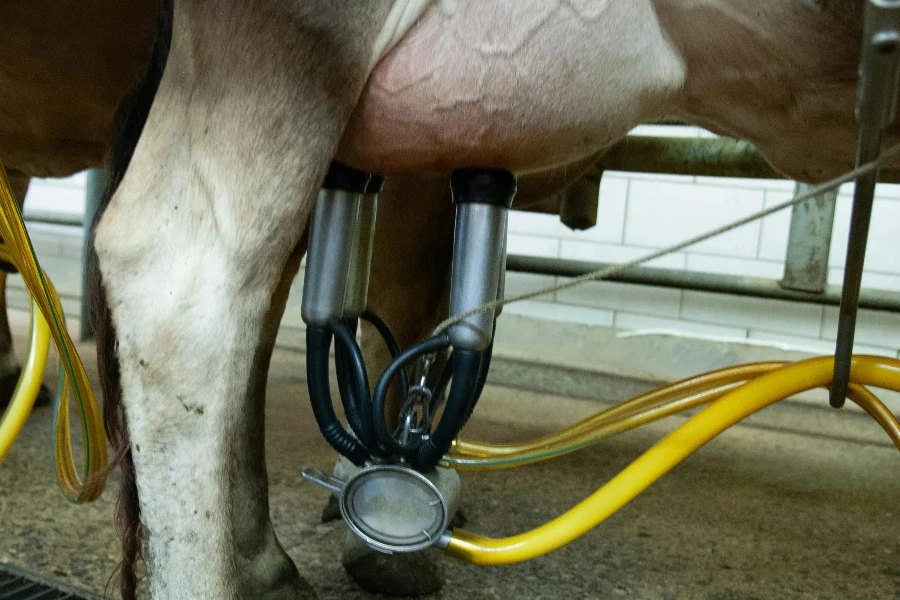
Technological advancements have significantly improved the functionality and efficiency of cow milking machines. Some of the latest features include:
Automatic Cluster Removal (ACR): This feature ensures that the teat cups are removed automatically once milking is complete, preventing over-milking and reducing the risk of mastitis.
Milk Flow Sensors: These sensors measure the milk flow rate and alert the operator to any irregularities, ensuring consistent milk quality and yield.
Integrasi data: Modern milking machines can integrate with farm management software, providing real-time data on milk yield, cow health, and machine performance. This data-driven approach helps in making informed decisions to optimize dairy operations.
Efisiensi energi: Newer models are designed to be more energy-efficient, reducing operational costs. Features like variable speed vacuum pumps adjust power usage based on the number of cows being milked.
Robotic Milking Systems: These fully automated systems use robotic arms to attach teat cups and perform the entire milking process without human intervention. They are ideal for large-scale operations, offering consistent milking schedules and improved animal welfare.
Standar dan Sertifikasi Keamanan
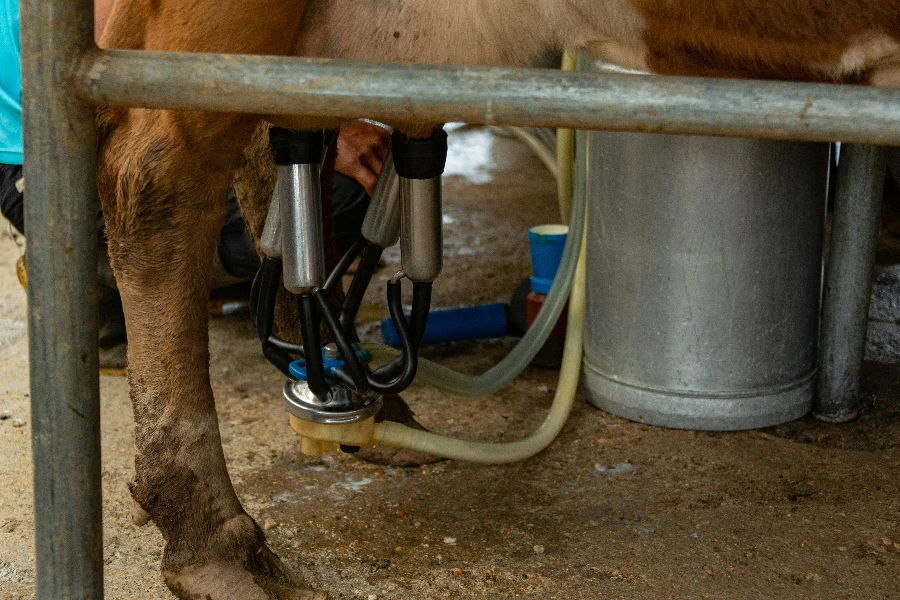
Ensuring that the cow milking machine complies with safety standards and certifications is crucial for both operator safety and milk quality. Important certifications and standards include:
Standar ISO: ISO 5707 and ISO 6690 are international standards that specify the requirements for milking machines and their components. Compliance with these standards ensures the machine’s reliability and safety.
CE Marking: For machines sold in the European Economic Area, the CE marking indicates that the machine meets all safety, health, and environmental protection requirements.
Persetujuan FDA: In the United States, machines that come into contact with food products must comply with FDA regulations to ensure they are safe for use in food production.
Local Certifications: Depending on the region, there may be additional local certifications required. These certifications ensure that the machine meets regional safety and hygiene standards.
Kesimpulan
In conclusion, selecting the right cow milking machine involves a comprehensive evaluation of various factors, including machine type, performance, design, ease of use, and technological features. Ensuring compliance with safety standards and certifications is equally important. By considering these factors, dairy operators can choose a machine that enhances efficiency, ensures milk quality, and provides long-term reliability.
